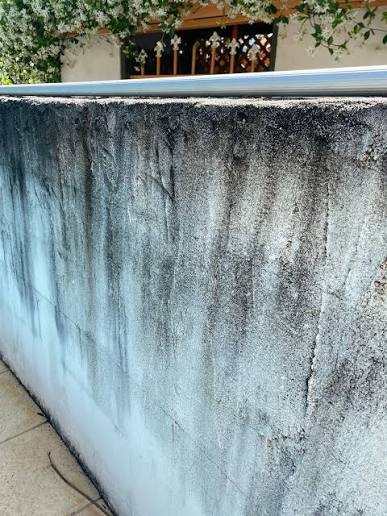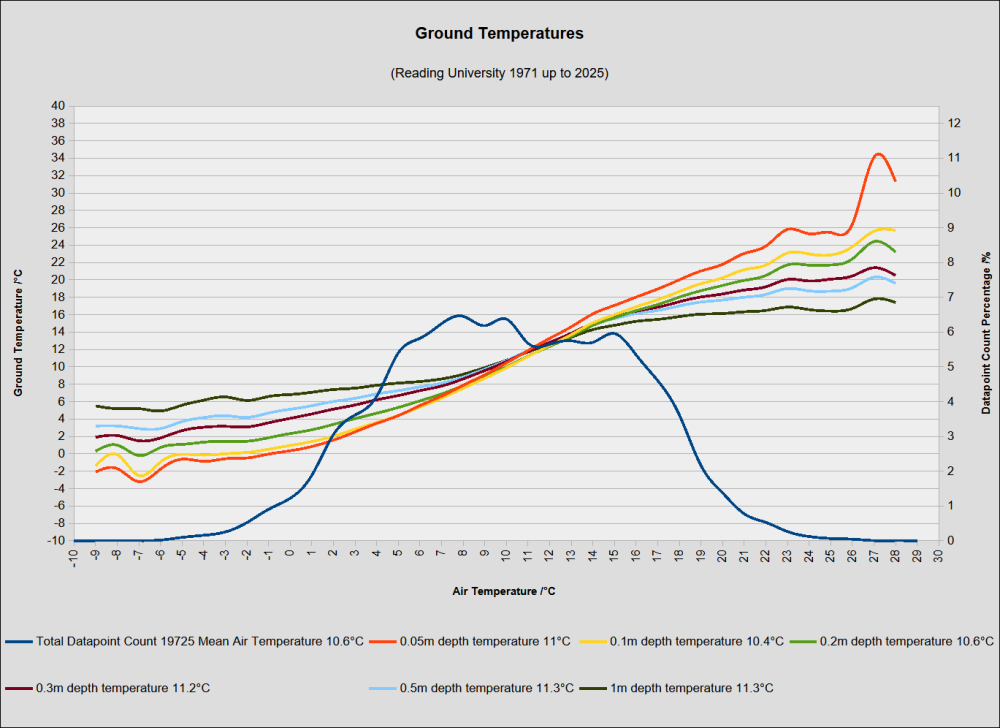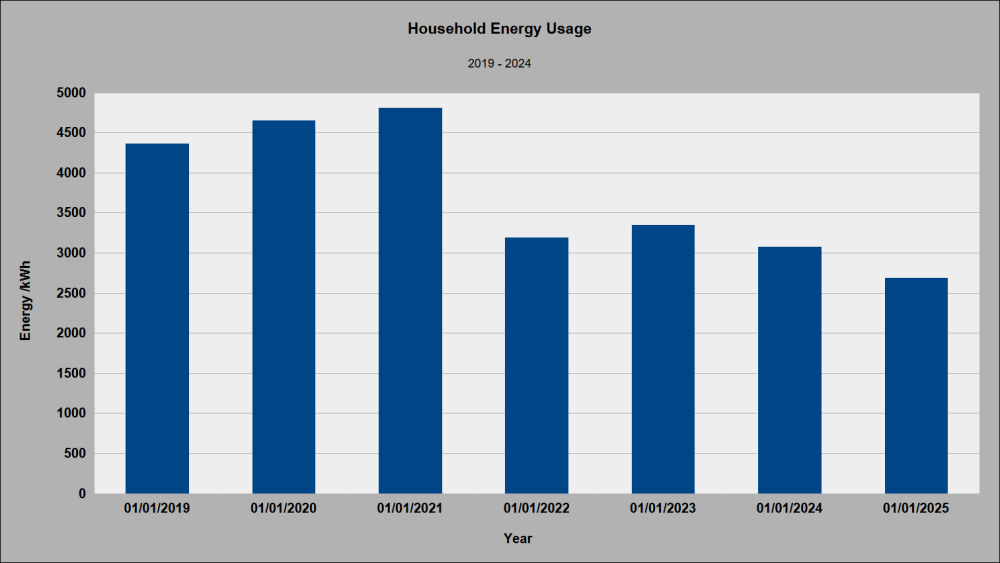-
Posts
23050 -
Joined
-
Days Won
185
Everything posted by SteamyTea
-

Recommend a thermometer gun thing.
SteamyTea replied to Russell griffiths's topic in General Self Build & DIY Discussion
My cheap IR thermometer from Lidl is pretty good. As said above, the reflectivity of the object can change the reading. You can calibrate them easily with a photocopy grey scale card. -

How do you install Compriband _under_ windows?
SteamyTea replied to Alan Ambrose's topic in Windows & Glazing
Does it make taking windows out harder as well? -

How do you install Compriband _under_ windows?
SteamyTea replied to Alan Ambrose's topic in Windows & Glazing
It was probably integral skin PU. Car steering wheels and office chair arm rests are made from it. Made hundreds of different tools to mould in over the years. Can be tricky to mould right as it is very temperature sensitive to get the correct skin thickness and consistency. Extruding it would be pretty cheap, once the machinery and dies were made. -
TL;DR I am a fan of water based paints. Also makes cleaning up easy. A good palm sander (1/4 sheet) is useful and I have found that brushes and rollers can be very variable. I dislike using large brushes or rollers, but then I have tiny hands and tendonitis. Good quality dust sheets that are easily washable i.e. not so large it would overload your washing machine. Radio that you don't car if it gets splattered. Radio 4 is my station of choice, you want a constant 'beat' and apart from the news, not much to get the pulse racing.
-
As the world transitions to more RE, future manufacturing will have a lower CO2e footprint. The easy way to compare is to find out where the kit is made, then look at that counties CO2e/GDP figures. Not perfect, but about as good as you will get.
-

Premier Tech Ecoflow
SteamyTea replied to Dave and Helen's topic in General Self Build & DIY Discussion
Where will you buy the coconut husks from when the supplier has vanished. Get a STP with a separate air blower. Blowers built in can be noisy. -

How do you install Compriband _under_ windows?
SteamyTea replied to Alan Ambrose's topic in Windows & Glazing
Most foams are polyurethane based, but can have other polymers added during manufacture, or diffused post manufacture. There are a number of different polymers added 'to the mix'. Acrylics are the most common, but polyolefin and ethylene propylene diene monomer are often used. Those two can control expansion times, water and weather resistance. Generally these slow expanding foams are open cell as it is hard to compress the air reliably in close cell, but also it makes them more dimensionally stable over a greater range of temperatures and air pressure differences. So best to create a secondary seal with a water and UV resistant sealant both sides, and tape if you can. I don't know the cost of a good product, but suspect it is a tiny part of the overall fitting cost. -

Triple glazed Vs double glazed patio doors
SteamyTea replied to flanagaj's topic in Doors & Door Frames
Really just a case of looking at the overall U-Value you end up with. While I only have standard 4-16-4 glazing in wooden frames, adding airtight secondary glazing has made a huge difference to comfort, especially noise reduction. Overall energy usage has dropped significantly as well. -
More botany than Physics, but I think it is to do with polar forces i.e. repulsion between surfaces, and cell membrane rupturing, which is caused by polar forces, but attraction to the cell nuclei, which breaks the cell wall. Quite simply, and as with most things, if it worked reliably, it would be common practice. https://chem.libretexts.org/Courses/University_of_Kentucky/CHE_103%3A_Chemistry_for_Allied_Health_(Soult)/05%3A_Properties_of_Compounds/5.03%3A_Polarity_and_Intermolecular_Forces
-
Self cleaning glass has a tiny crisscross pattern etched into the surface. The ideas is that water droplets form easier (because of water's high surface tension and less glass area to act on). Not very good long-term though. We used to use RainX on the Steamroom ceilings, that worked well, as did a weak detergent solution.
-
-
Not heard of them having a protective coating. Usually slightly dimpled, low reflective and transmittance, toughened glass. Probably caused by sappy leaves off the nearby tree.
-
Roof integrated them, would hardly be noticeable to a passerby. Maybe a few pictures of solar slates as an example, put point out that there may be a difference. I drove past this place a lot and never realised it had PV, and on closer inspection, it could have been a much better installation.
-
What orientation are those panels at. Not really seen moss on south facing ones. But then we get a lot of rain and high winds here. Regular cleaning is probably the easy way. I have a floor cleaner that washes windows brilliantly.
-
Worked in the health and leisure industry and we called them bacterial breeders.
- 9 replies
-
- hot tub
- insulation
-
(and 1 more)
Tagged with:
-

Floor slab insulation. Test my logic please?
SteamyTea replied to saveasteading's topic in Barn Conversions
Not really that much difference. -
Just ended up stuck there when I first finished university.
-
Having grown up in the Far East and the West Indies (very close to Caracas), I would have my home at 24°C and above all the time.
-

Floor slab insulation. Test my logic please?
SteamyTea replied to saveasteading's topic in Barn Conversions
-
Mainly the challenge and CO2. The grid intensity CO2 is outside of my control, but then I started it was around 0.7kg.kWh-1. Initially I saved 30% by just managing my usage better. That was a no cost option. Changed to LED lighting (less than £30). I then started by spending some money, mainly £60 on some digital timers to limit my E7 window better (heat up in the last 4 hours rather than the first 4 hour). Then extra loft insulation (still got some more to add). Then I started the miserable job of draughtproofing, cheap to do, but time consuming. Then the secondary glazing (less than £200 for all but 2 windows, so 12 windows in all. Left 2 windows for escape routes). I also reduced parasite loads. This really involved making sure any standby loads were very low. Getting rid of a desktop PC and using laptops has made the biggest difference. There were setbacks, mainly my lodger who, until I beat her with a pointy stick, would stand under the shower till the water went cold. Eventually she learnt her lesson. If it was not more the orientation and the small roof, and having to spend my spare cash on bi-monthly visits to see my Mother, I would put some PV on the roof. As my DHW usage is about 4 kWh.day-1, I could probably get 80% of my DHW for nothing (I could also reduce usage, but I love my morning baths). To celebrate, I heated up the room I am in to 24°C this morning. Hansom it was.
-
Take me 20 years, but very little cash to to reduce my household energy use to below 3MWh.year-1. When I first moved in, it was around 11 MWh. This last year, I used 2,780 kWh. That is 335 kg of CO2. Feeling pretty chuffed about that as I have been warm, but never too hot, fed and bathed. If you are wondering why there was a big drop from 2022, that is because I fitted my home made secondary glazing (making my windows triple glazed).
-

Husqvarna stone saw popping and flames out of muffler?
SteamyTea replied to flanagaj's topic in Tools & Equipment
I am just impressed that you used a noisy ICE powered tool on New Years Day. Glad you are not my neighbour, but it has inspired me to do more noisy things on a Sunday morning, I feel like upsetting my neighbours who have got into the habit of parking on the white, demarcation lines in the parking area. On a good day, I cannot open my car doors. (expletive deleted)ing wankers. -

Floor slab insulation. Test my logic please?
SteamyTea replied to saveasteading's topic in Barn Conversions
It is, by definition, not what it was.









